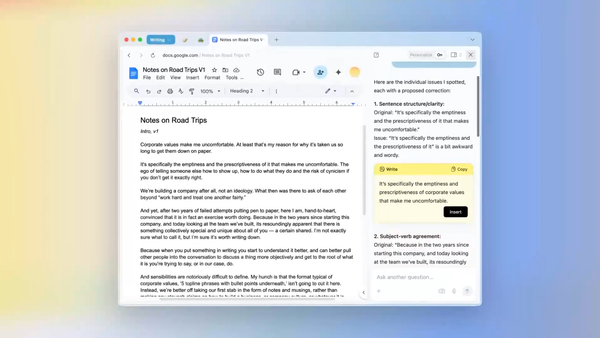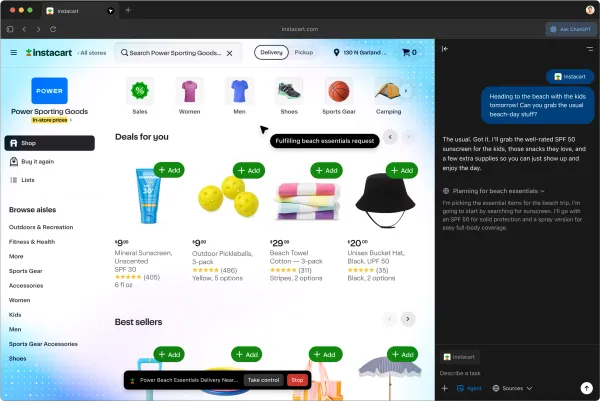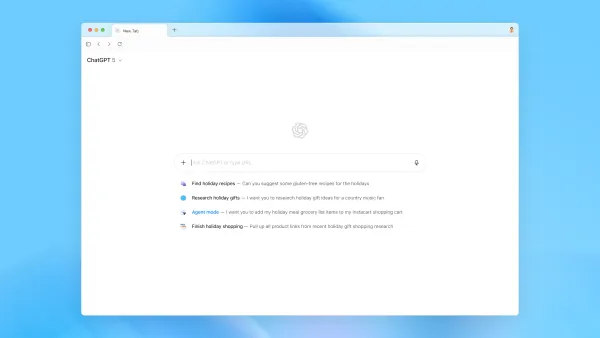Arc, Dia, and the Web
Dia is starting to get into more people’s hands and, honestly I’m really not that impressed right now

Arc’s Original Ethos
Back when Arc was created, the idea was that it was a place to work with web apps, and a lot of the functionality was built around that. These days a lot of the apps that we use are really just built as web apps, especially on the desktop. Let’s be honest: it just is the place that makes the most sense to deploy most apps. You don’t have to deal with App Stores, or different platform restrictions, or much of anything. So long as you have a server, an IP address, and—ideally—a domain name, you can get your app on the web.
The most popular apps out there such as Google Workspace, Slack, Notion, Discord, and so on are all built on the web. Even if you’ve got a desktop version of the app, it’s actually really just a web browser pretending to be an app. It’s really where things these days are happening.
The ethos with Arc was that, because all of the apps that we use in our lives are built on the web, let’s build a place that really makes working on the web really enjoyable—and it did just that. I’m writing this post in Notion on the web in Arc as we speak, I’ve really enjoyed this browser and I’ve talked a lot about that over the years and even now, as I’ve accepted the death of Arc, I am still sitting here using it.
Arc Max and the AI Bubble
Right when ChatGPT started to blow up, The Browser Company decided that it wanted to pivot into catering to the AI revolution and it started to add new features in, what was going to become a subscription service: Arc Max. This was a pretty cool set of features, including the ability to ask about the page you’re looking at, cleaning up tab names when you pin them, and ChatGPT integration in the command bar. I honestly thought it was a great set of features that I honestly would have paid the subscription to keep having access to.
Arc’s Problem
Okay we as a society have talked a lot about what happened with Arc, as has The Browser Company. They have a vision for what they want to become, but the community feels abandoned. It’s a weird place to be in because I think that Arc is a great browser, but I also know that The Browser Company is good at building apps. We’ll see how it goes as Dia starts rolling out to more people.
Dia: The Browser Company’s New Focus
So when The Browser Company realized that Arc wasn’t going to rival the likes of Google Chrome, they decided to call it quits and shift their focus to something entirely different. Dia is a much more familiar kind of interface, but it’s also got a built in chatbot built on GPT-4…kinda like how Google Chrome has Gemini built in…and kinda like how you can ask Arc about things on the page. It’s in an infant state, sure, but a lot of what made Arc great is just…gone. It feels much more like a traditional web browser, which will be good for people who aren’t going to be interested in making a bit switch to something like Arc. Dia isn’t built to make web apps more enjoyable like Arc is, really it’s…just another Chrome fork. Matt Birchler talked a lot about this in his overview of Dia on his YouTube channel A Better Computer.
Dia vs Arc
Really it doesn’t feel like Dia is special. It’s got some neat features in the ability to bring in context from the whole browser, but it’s nothing like Arc was. Arc was a home on the internet. A place where you could just kinda feel at ease. It was fun to use, the sidebar worked really well for a browser (so much so that multiple browsers have added the functionality to do so as well), and overall I still think it’s a better experience than Chrome ever was or will be.
My biggest fear is that Dia isn’t special. It’s got a good idea, but it’s also an idea that multi-trillion dollar companies have already thought of. It feels like they’re no longer focused on building something cool, they’re focused on getting acquired by a company like Anthropic or OpenAI and that just feels bad.
What About the Web
This is the big thing that bugs me about losing a browser like Arc: Dia does none of the stuff that I actually liked using Arc for. It’s just a browser. It doesn’t feel like it’s an operating system for the web in the same way that Arc is and that’s something that’s really going to be hard to get me on board with personally. Ultimately I think that The Browser Company was right the first time. Arc is great. I think there are things they could have done (they cited issues with the tech stack that they couldn’t work around) to make it better, but ultimately they were on the right track here.
Dia doesn’t do anything different with how it handles web apps: I don’t like using Google Chrome for that kind of thing. I don’t like keeping open tabs on a Chrome-like browser like I do with Arc. On a fundamental level, Arc was used incredibly differently than a traditional browser and Dia doesn’t bring any of that with it.
Dia is still going to fall into the same problem that Arc did: how are they going to make money? Arc is something I would have paid for, and Arc Max was definitely something I would have paid for.
What I Would Have Done
Had The Browser Company put this feature that is the mainstay of Dia into Arc they would have been in a much better spot in my opinion. And here’s the thing: it’s kinda already here. Like I said, you’ve been able to ask about what’s on the page in Arc for a long time, and they were well ahead of companies like Google there. Dia takes it one step further and allows you to bring in context from all of your tabs, but it’s still the same thing.
Socials
Bluesky: @samclemente.me
Mastodon: @CountableNewt




